Abstract
A study of breast-feeding practices over the first 6 months of life among a cohort of urban poor infants in southern Brazil indicated that the median duration of breast-feeding was 18 weeks, and at 6 months 41% of the infants were still being breast-fed. The duration of breast-feeding was significantly associated with the following: the infant's sex, mother's colour, type of first feed, timing of the first breast-feed, breast-feeding regimen and frequency of breast-feeding at 1 month, and the use of hormonal contraceptives by the mother. The following were significant risk factors for early termination of breast-feeding: the infant's sex, type of first feed, use of supplementary feeds, frequency of breast-feeding, feeding regimen, weight-for-age, and weight-for-age after controlling for birth weight. Dissatisfaction with their infant's growth rate was the most frequent reason given by mothers for supplementing the diets of infants who were exclusively breast-fed in the first 3 months of life. Also, the mothers' perception that their milk output was inadequate was the most frequent reason expressed for stopping breast-feeding in the first 4 months. The roles of health services and family support in providing favourable conditions for increasing the duration of breast-feeding in the study population are discussed, as well as the possibility of bias being introduced into studies of the relationship between infant feeding and growth by the effect of the infant's rate of growth on the mother's decision to continue breast-feeding.
Full text
PDF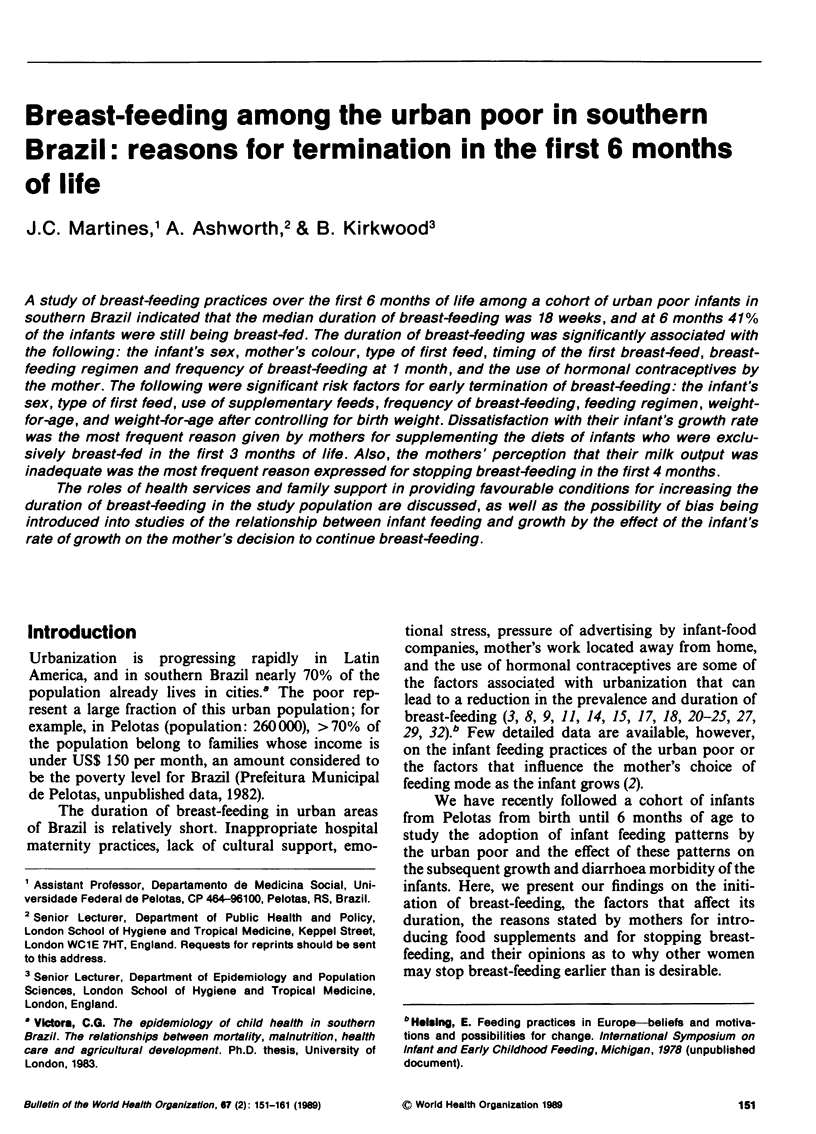
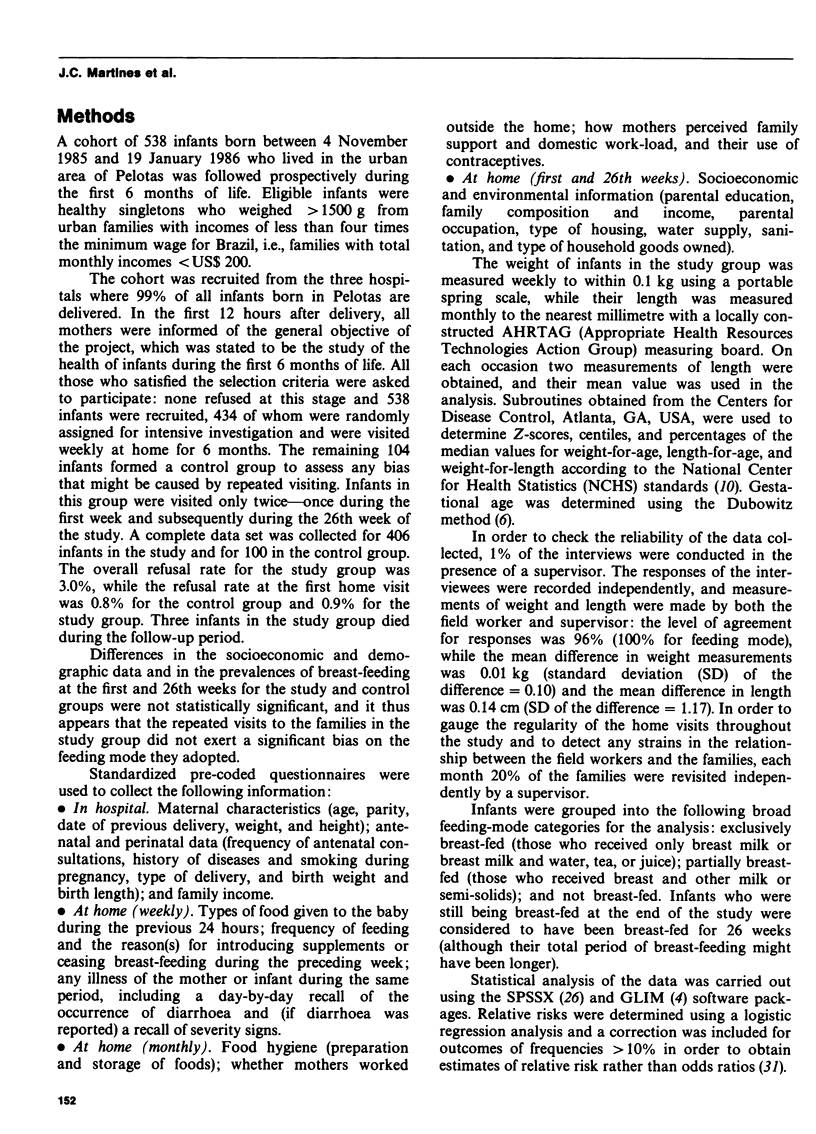
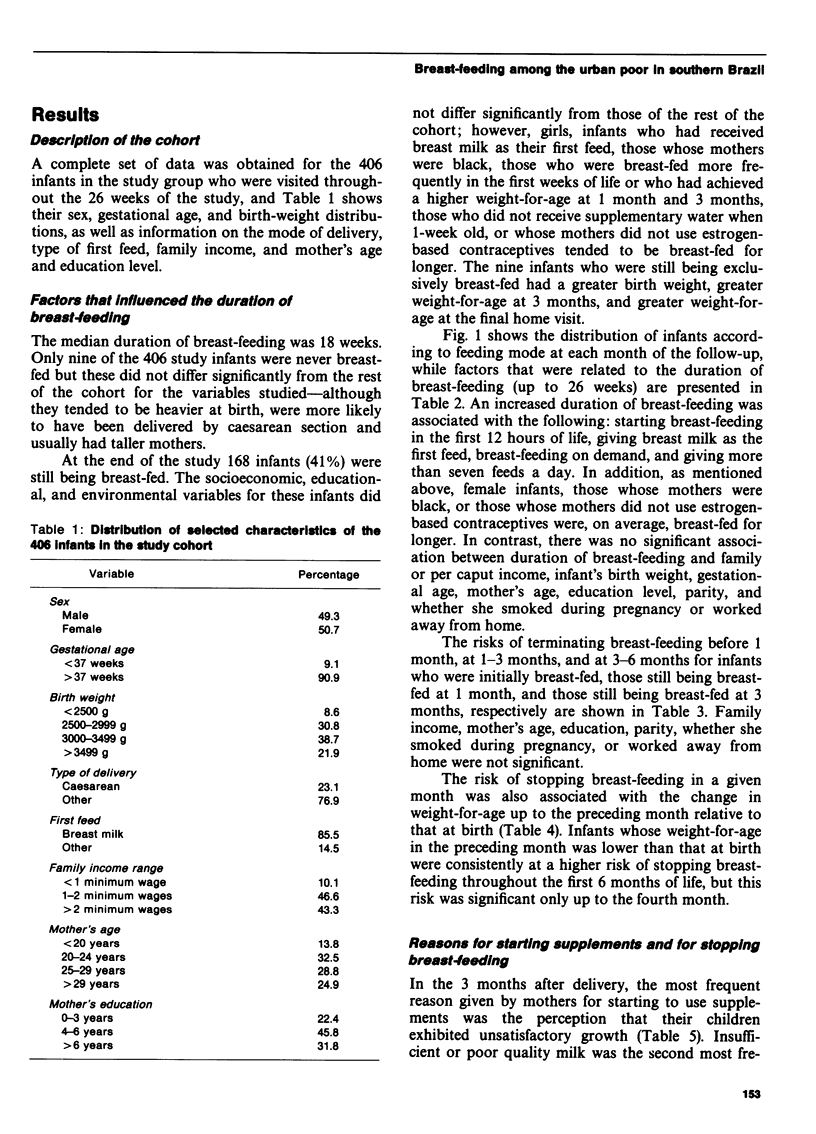
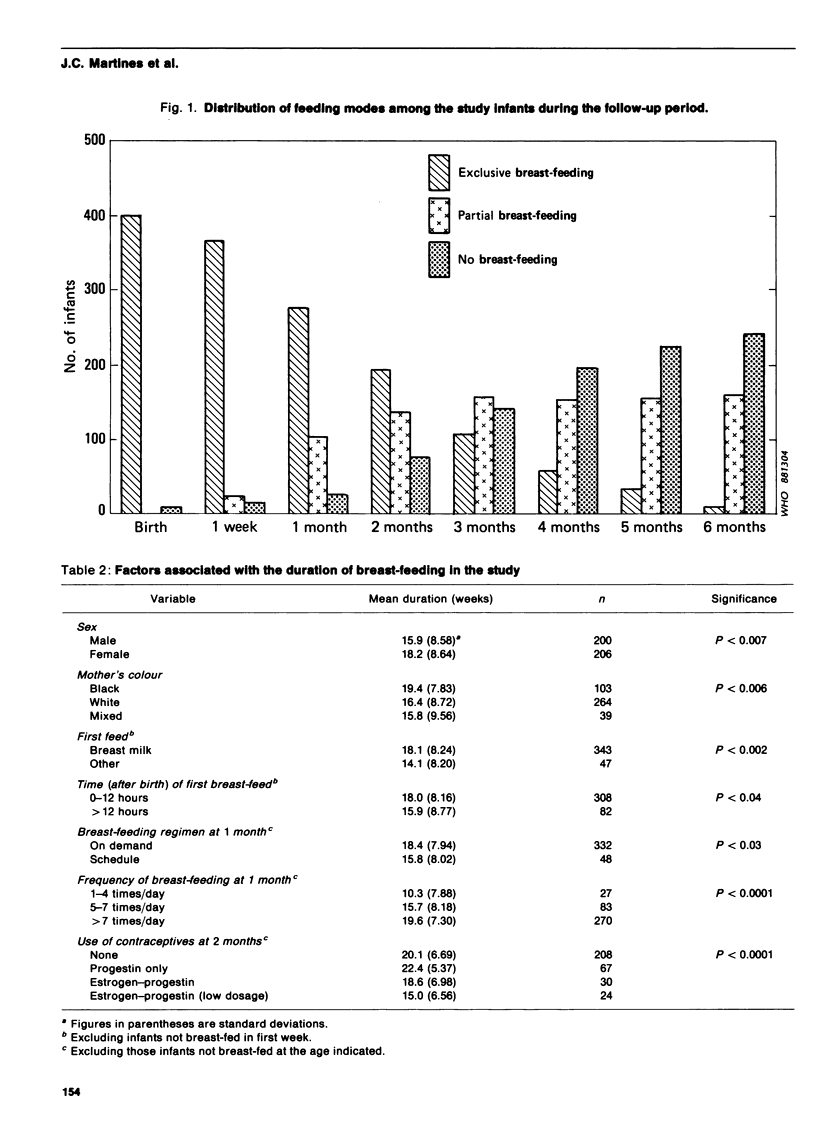
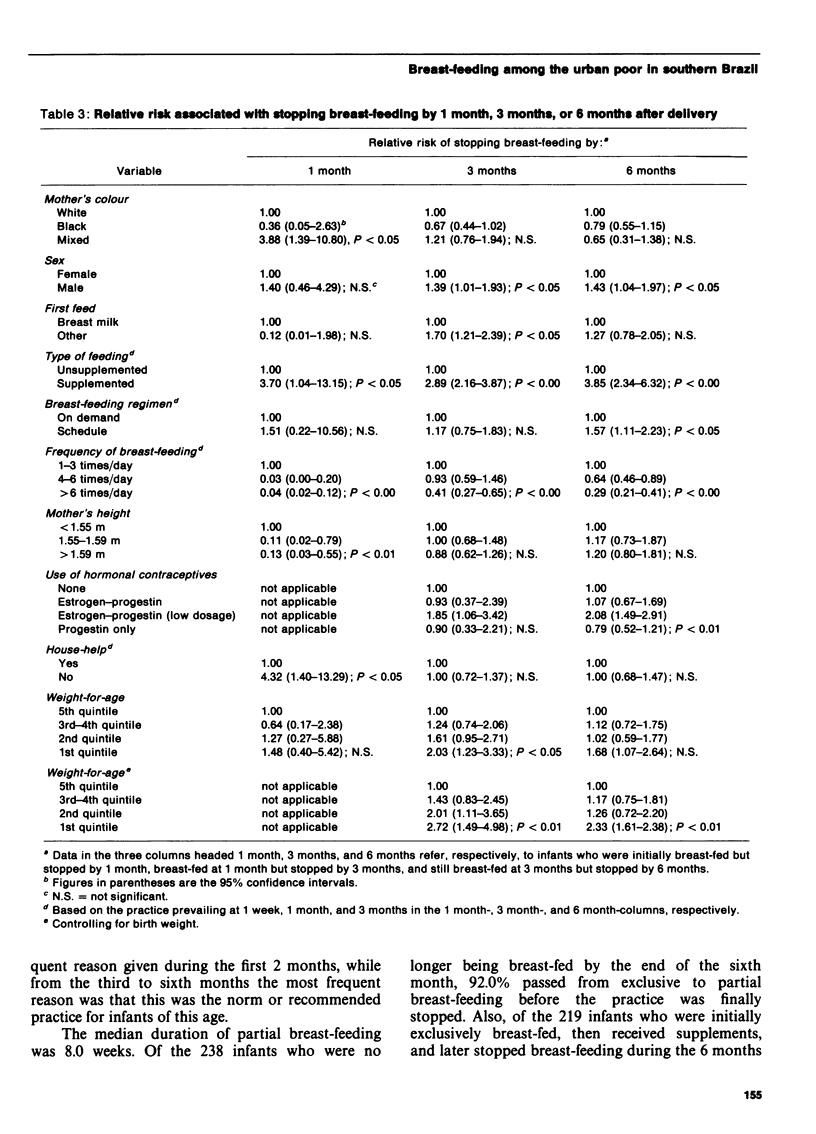

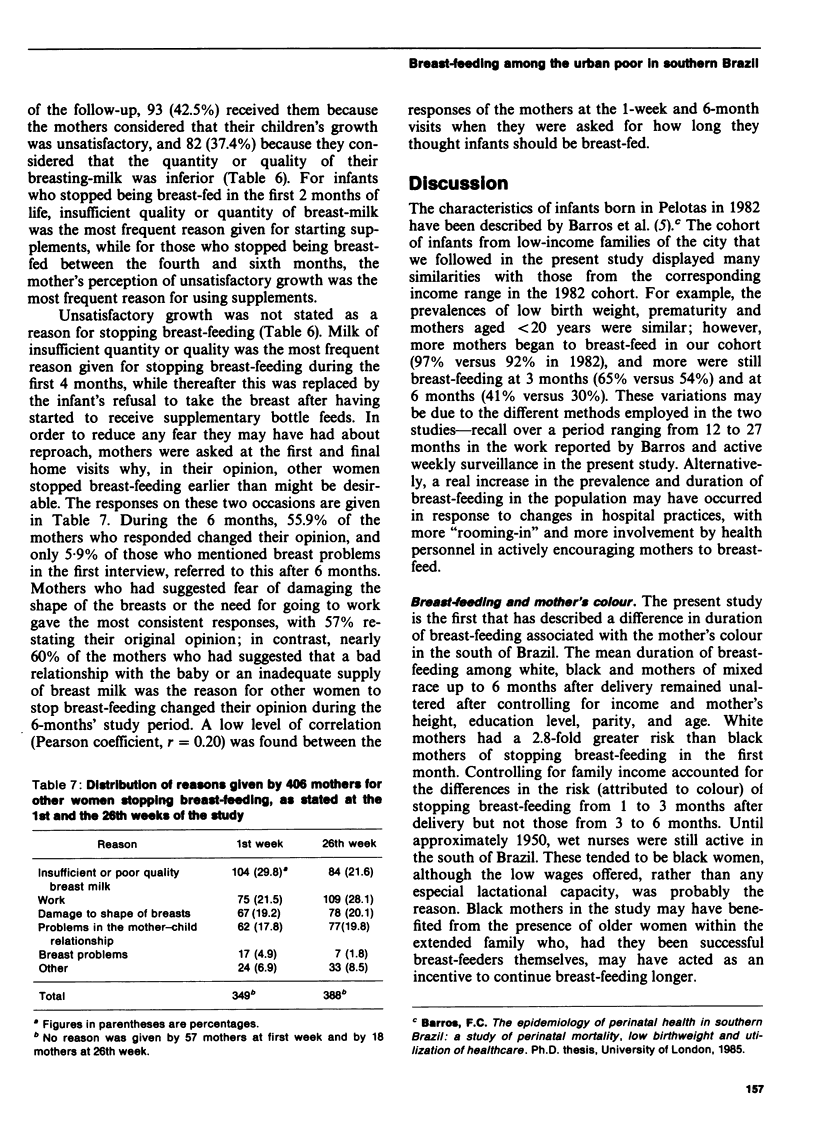
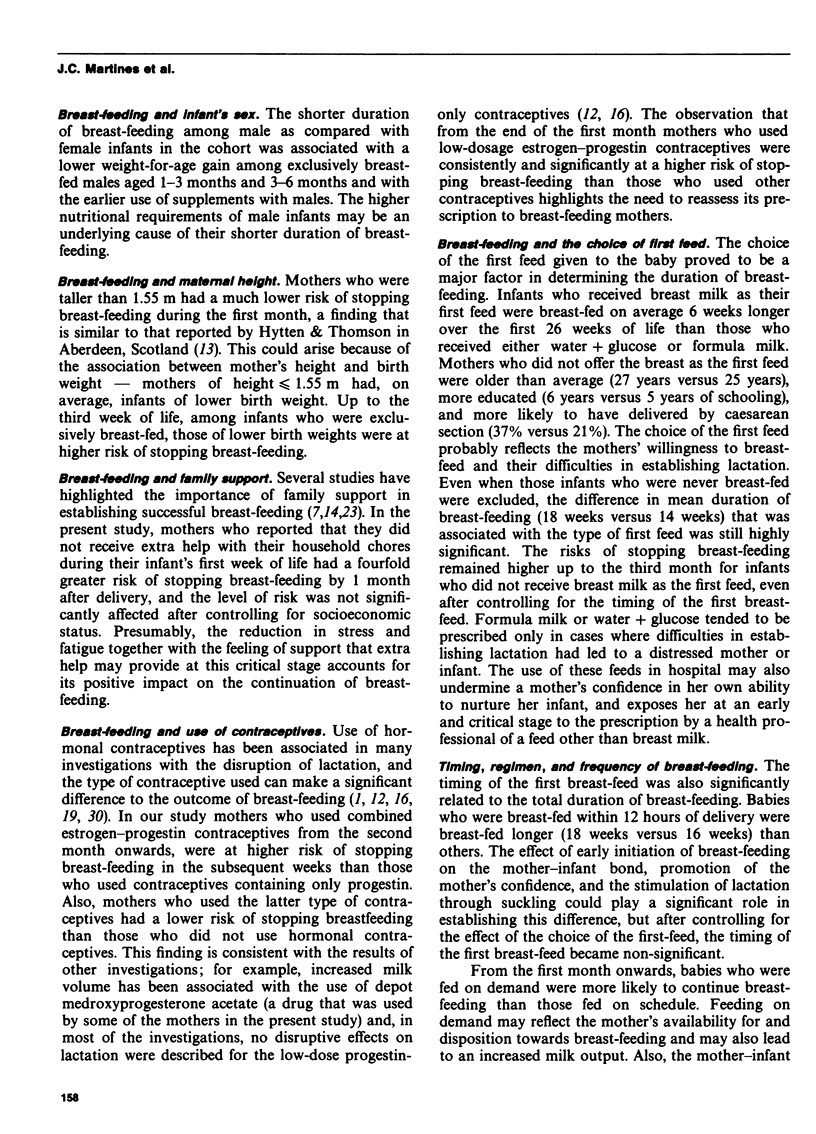
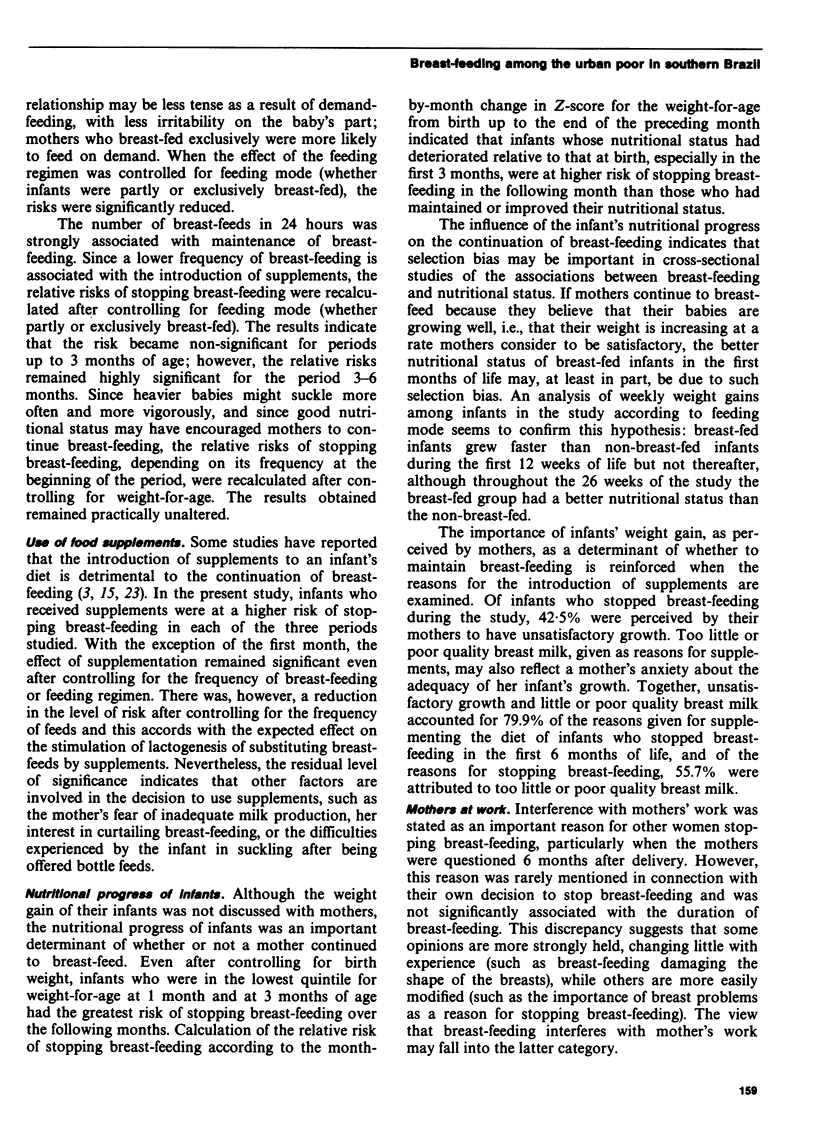
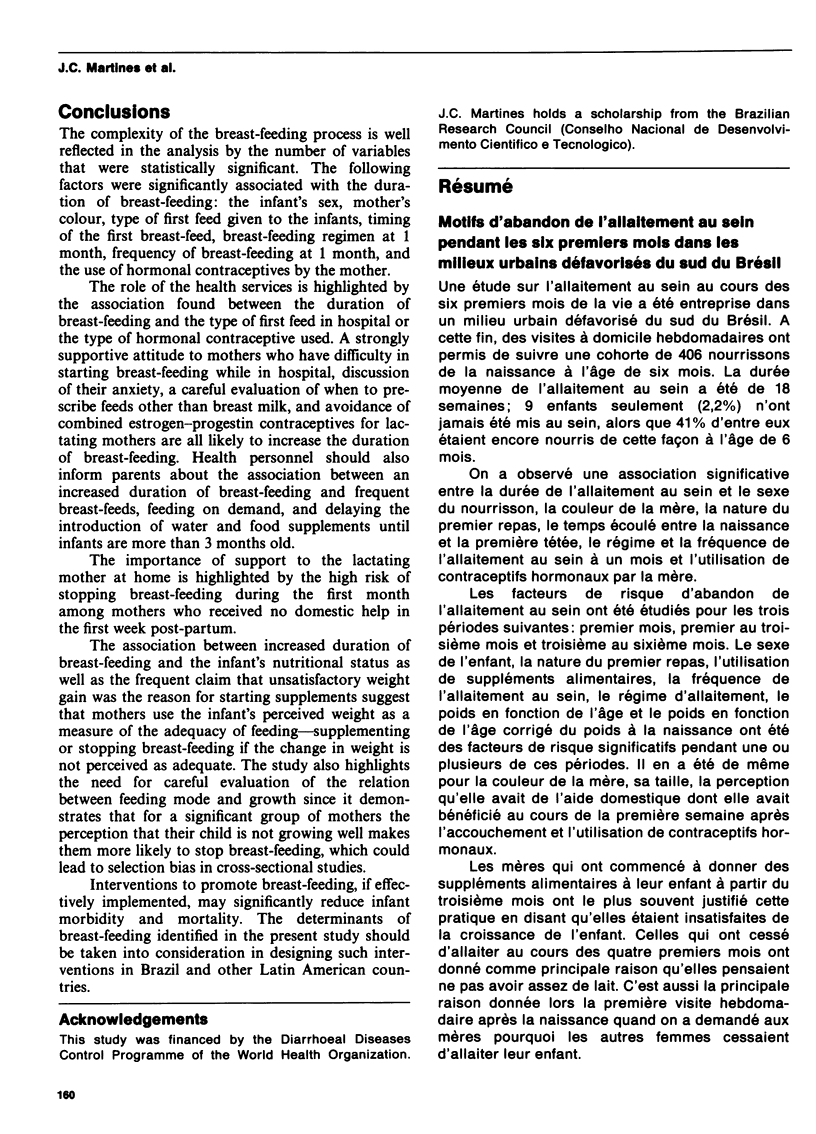
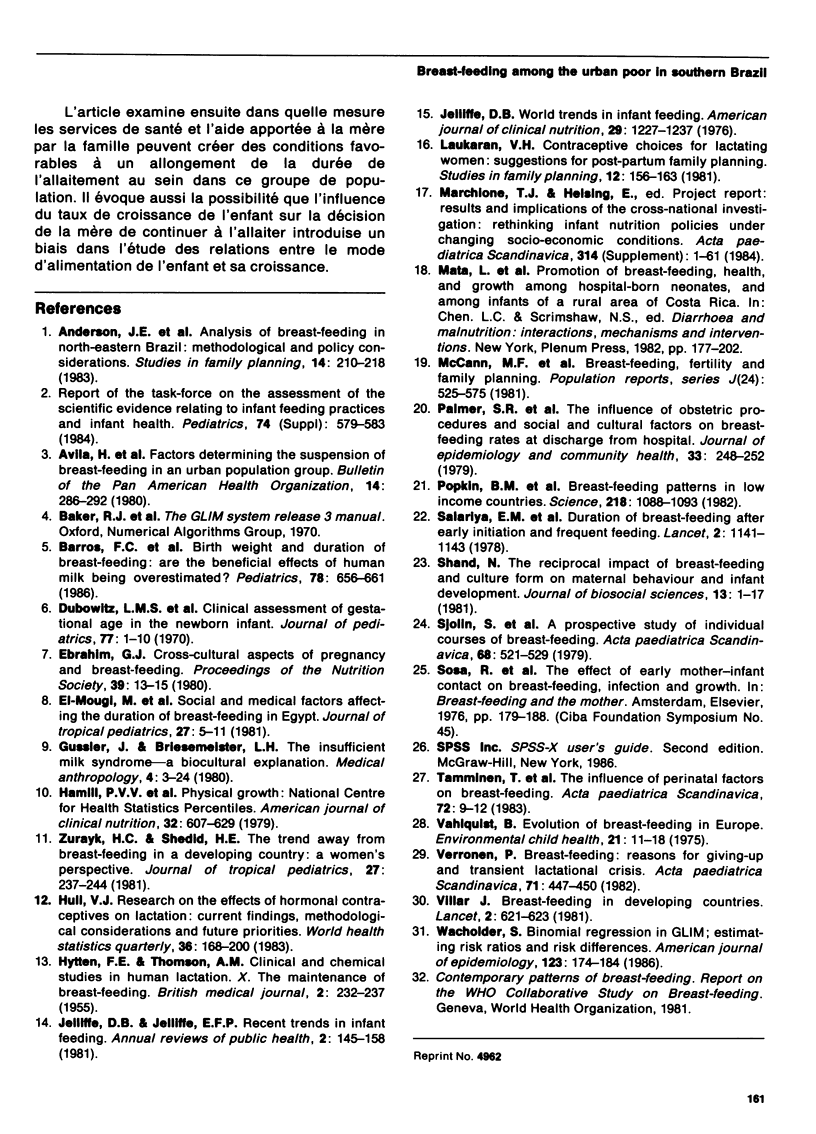
Selected References
These references are in PubMed. This may not be the complete list of references from this article.
- Anderson J. E., Rodrigues W., Thome A. M. Analysis of breastfeeding in northeastern Brazil: methodological and policy considerations. Stud Fam Plann. 1983 Aug-Sep;14(8-9):210–218. [PubMed] [Google Scholar]
- Avila H., Arroyo P., García D., Huerta F., Díaz R., Casanueva E. Factors determining the suspension of breast-feeding in an urban population group. Bull Pan Am Health Organ. 1980;14(3):286–292. [PubMed] [Google Scholar]
- Barros F. C., Victora C. G., Vaughan J. P., Smith P. G. Birth weight and duration of breast-feeding: are the beneficial effects of human milk being overestimated? Pediatrics. 1986 Oct;78(4):656–661. [PubMed] [Google Scholar]
- Ebrahim G. J. Cross-cultural aspects of pregnancy and breast feeding. Proc Nutr Soc. 1980 Feb;39(1):13–15. [PubMed] [Google Scholar]
- HYTTEN F. E., THOMSON A. M. Clinical and chemical studies in human lactation. X. The maintenance of breast-feeding. Br Med J. 1955 Jul 23;2(4933):232–237. doi: 10.1136/bmj.2.4933.232. [DOI] [PMC free article] [PubMed] [Google Scholar]
- Hull V. J. Research on the effects of hormonal contraceptives on lactation: current findings, methodological considerations and future priorities. World Health Stat Q. 1983;36(2):168–200. [PubMed] [Google Scholar]
- Jelliffe D. B., Jelliffe E. F. Recent trends in infant feeding. Annu Rev Public Health. 1981;2:145–158. doi: 10.1146/annurev.pu.02.050181.001045. [DOI] [PubMed] [Google Scholar]
- Laukaran V. H. Contraceptive choices for lactating women: suggestions for postpartum family planning. Stud Fam Plann. 1981 Apr;12(4):156–163. [PubMed] [Google Scholar]
- Palmer S. R., Avery A., Taylor R. The influence of obstetric procedures and social and cultural factors on breast-feeding rates at discharge from hospital. J Epidemiol Community Health. 1979 Dec;33(4):248–252. doi: 10.1136/jech.33.4.248. [DOI] [PMC free article] [PubMed] [Google Scholar]
- Popkin B. M., Bilsborrow R. E., Akin J. S. Breast-feeding patterns in low-income countries. Science. 1982 Dec 10;218(4577):1088–1093. doi: 10.1126/science.7146896. [DOI] [PubMed] [Google Scholar]
- Shand N. The reciprocal impact of breast-feeding and culture form on maternal behaviour and infant development. J Biosoc Sci. 1981 Jan;13(1):1–17. doi: 10.1017/s0021932000013158. [DOI] [PubMed] [Google Scholar]
- Tamminen T., Verronen P., Saarikoski S., Göransson A., Tuomiranta H. The influence of perinatal factors on breast feeding. Acta Paediatr Scand. 1983 Jan;72(1):9–12. doi: 10.1111/j.1651-2227.1983.tb09655.x. [DOI] [PubMed] [Google Scholar]
- Verronen P. Breast feeding: reasons for giving up and transient lactational crises. Acta Paediatr Scand. 1982 May;71(3):447–450. doi: 10.1111/j.1651-2227.1982.tb09450.x. [DOI] [PubMed] [Google Scholar]
- Villar J., Belizan J. M. Breastfeeding in developing countries. Lancet. 1981 Sep 19;2(8247):621–623. doi: 10.1016/s0140-6736(81)92755-0. [DOI] [PubMed] [Google Scholar]
- Wacholder S. Binomial regression in GLIM: estimating risk ratios and risk differences. Am J Epidemiol. 1986 Jan;123(1):174–184. doi: 10.1093/oxfordjournals.aje.a114212. [DOI] [PubMed] [Google Scholar]
- Zurayk H. C., Shedid H. E. The trend away from breast feeding in a developing country: a women's perspective. J Trop Pediatr. 1981 Oct;27(5):237–244. doi: 10.1093/tropej/27.5.237. [DOI] [PubMed] [Google Scholar]


